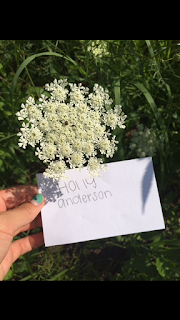EASTERN DECIDUOUS FOREST AND TALL GRASS PRAIRIE
COMMON NAME: Weeping Willow
GENUS AND SPECIES NAME: Salix Babylonica
Habitat: moist soils, foodplains, streamsides, riverbanks, hill prairies, open woods
Use: salicylic acid eases pain and reduces inflammation, headache treatment, used in toothaches, leaves are used as blood purifier and treat skin eruptions, can be chewed for sore throats, vines can be used as a splint for broken bones and stops blood flow
Preparation: to make tea, tear off piece of bark and place in water. bring water to boil and remove from the heat. Allow to steep for thirty minutes. Drink like a tea, but do not exceed three times a day. Use leaves to make poultice and apply topically to relieve pain.
Active chemical: salicylic acid
Chemical formula:C7H6O3
TALL GRASS PARIRIE AND EASTERN DECIDUOUS FOREST
COMMON NAME: Yarrow
GENUS AND SPECIES NAME: Achillea millefolium
Season: May-November
Habitat: fields, pastures, prairies, roadsides, waste places, wooded areas
Uses: fever, fresh leaves for toothache, applied to skin to stop bleeding, insect stings, sweating, taken by mouth to reduce inflammation, healing of colds and fevers, digestion- diarrhea; will lessen pain and prevent infections
Preparation: can be made into a tea or tincture, but for large amounts of blood, flowers are crushed or chewed and applied, packed directly, and layered if desired.
Active chemical: Apigenin
Chemical formula: C15H10O5
EASTERN DECIDUOUS FOREST AND TALL GRASS PRAIRIE
COMMON NAME: Sassafras
GENUS AND SPECIES NAME: Sassafras albidum
Season: flowers April-May, fruits late August-October
Habitat: border of dry woods, glades, prairies, bottomland soils in valleys, roadsides, pastures, and thickets.
Use: bark tea can be used as blood purifier, bark used for treatment on skin eruptions, helps fight infections with open wounds, bites, fungus as well as open fractures.
Preparation: wash roots, place in boiling water until it turns red. Steep, then allow to sit before drinking
Active Chemical: linoleic-acid
Chemical Formula: C18H32O2
TALL GRASS PRAIRIE AND EASTERN DECIDUOUS FOREST
COMMON NAME: Cattail
GENUS AND SPECIES: Typha latifolia
Season: May-July
Habitat: marshes, sloughs, ditches, margins of ponds and lakes
Use: pounded roots used as poultice for burns and sores, internal bleeding, fibers used as sutures for closing compound fractures. Burned ash is used to stop bleeding and disinfect wounds. Slime in bottom of leaf will help stop bleeding and lessen pain.
Preparation: Burn ash and apply to wound. Obtain and apply slime to wound. Take fibers off of plant.
(n.d.). Botanical.com. A Modern Herbal | Plantain, Common. Retrieved September 7, 2015, from http://www.botanical.com/botanical/mgmh/p/placom43.html
(n.d.). NativeTech: Native American Technology and Art. CATTAIL - NativeTech: Indigenous Plants & Native Uses in the Northeast. Retrieved from http://www.nativetech.org/plantgath/cattail.htm
(n.d.). Ryan Drum, PhD/Island Herbs. Three Herbs: Yarrow, Queen Anne's Lace and Indian Pipe. Retrieved from http://www.ryandrum.com/threeherbs.htm




No comments:
Post a Comment